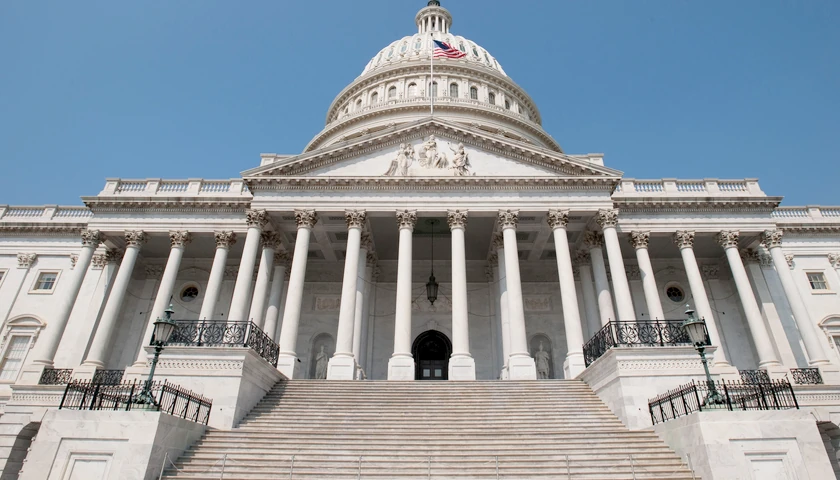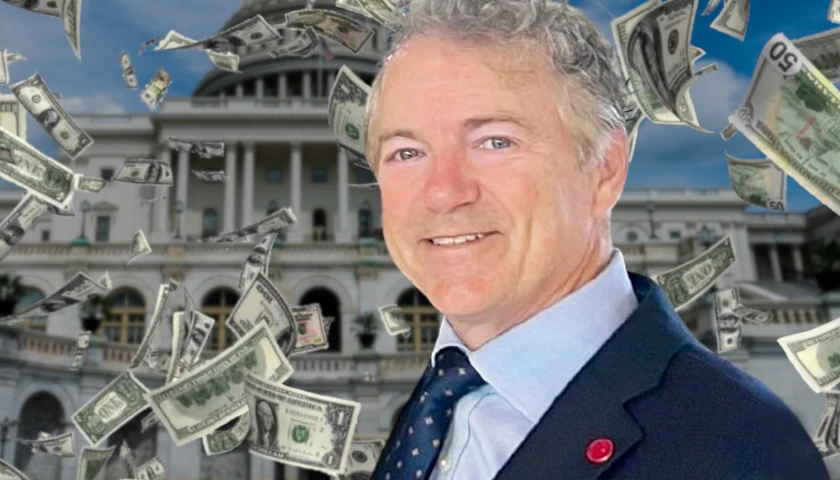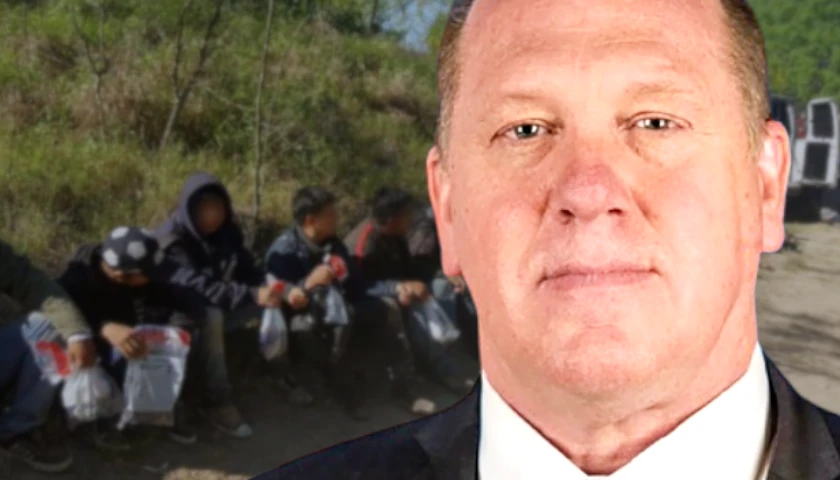by Alexander Zubatov
As Ukraine coverage blankets the news nonstop, I keep asking myself: are we really so gullible as to be hoodwinked by an administration and political class covering for their massive failures at home and abroad by mustering up a frenzy of dangerously jingoistic militarism? Not only have they escalated the situation and brought us to the brink of World War III but they have also imposed—and will continue to impose—senseless costs on an American economy already grinding to a halt.
I am not suggesting that any of Joe Biden’s major missteps, whether now or in the past, in any way excuse Russian President Vladimir Putin’s Ukraine invasion, which is in violation of international law and being conducted with reckless indifference to—indeed, the direct intent to inflict—civilian casualties. Although there is no question (details below) that Biden majorly provoked Putin, nothing Biden did stripped Putin of his agency in doing what he is now doing, much less did it demand he do it in the manner in which he is doing it.
With that said, however, our present sense of righteous indignation at the Russian president’s conduct should extend, as well, to our own administration’s dramatic failures that have brought us to this particular precipice. The fact is—and this should surprise no one—the same folks who gave us the grossly mismanaged withdrawal from Afghanistan have also taught a master class on how to bungle our crucial relationship with an already insecure nuclear superpower.
Since the Ukraine crisis began, we have been hearing vague proclamations from some conservative voices that Putin would not have invaded Ukraine if Trump were still president, while many liberals have been finding ways of blaming Trump’s alleged coddling of Putin for the Ukraine invasion. Say what you want about Trump: While he was in the Oval Office, our relationship with Russia remained civil and even cordial. Moreover, Putin did not undertake any major new military incursions into neighboring territory of the sort that had gone on under President Obama when Putin took Crimea. When Biden took the reins, however, that relationship rapidly deteriorated.
But we need not stop at this level of abstraction. Though the media (with a few notable exceptions) has almost entirely ignored these glaring facts, Joe Biden took very concrete steps that not only generally antagonized Putin but also directly precipitated the Ukraine invasion.
As CIA director William J. Burns’ 2019 book put it:
Ukraine entry into NATO is the brightest of all redlines for the Russian elite (not just Putin). In more than two and a half years of conversations with key Russian players, from knuckle-draggers in the dark recesses of the Kremlin to Putin’s sharpest liberal critics, I have yet to find anyone who views Ukraine in NATO as anything other than a direct challenge to Russian interests.
For Russia, Ukraine’s entry into an anti-Russian military alliance would have been something like we might have felt if Canada had entered the Warsaw Pact. Modern-day Russia traces its very origins to the unification in the Ninth century, under Oleg, ruler of Novgorod, of the Eastern Slavic tribes, creating the first Eastern Slavic state, known as Kievan Rus, with its capital in the modern-day Ukrainian capital of Kyiv. Kyiv, in other words, was the first capital of a united Slavic state, incorporating the ancestors of today’s Russians and Ukrainians alike, long before Moscow emerged as even a minor town on the historical radar in the 12th century.
Throughout the ensuing centuries, despite the invasion of the Mongols, subsequent control over large portions of present-day Ukrainian territory by Lithuania, Hungary, and Poland (bringing Catholicism to the Western Ukrainians, while the East remained in the Eastern Orthodox orbit), much drawing and redrawing of borders and periodic stirrings of Ukrainian nationalist sentiment, the Russian and Ukrainian peoples have spent more time united than divided, with people of both ethnicities freely flowing across and living on both sides of the ever-shifting boundary line.
To say this much is not to suggest that the current desire of many Ukrainians to go their own way is somehow illegitimate so much as it is to make clear that Putin’s claim to all or some of Ukraine, however unwarranted and destabilizing it may be, is not remotely akin to the United States hypothetically deciding to invade Canada or Mexico. Much less is Putin’s invasion of Ukraine remotely comparable to our 2003 invasion of far-off Iraq that unleashed ISIS or our Cold War-era interventions in distant nations such as Chile or Iran to overthrow leftist governments and install U.S.-backed puppet regimes that entailed a bloody 17-year military dictatorship in Chile and the eventual Islamic revolution and rise of the Ayatollahs in Iran.
With those considerations in mind, we can now address the specific question of why Putin’s invasion did not happen while Trump was in office but has happened under Biden’s stewardship. Trump, for all his faults and maddening inconsistencies, brought a dose of much-needed fresh thinking to our antiquated Cold War policy commitments. Reversing NATO expansionism under George W. Bush and Barack Obama, Trump famously called NATO “obsolete,” cut down on America’s outsized financial support for the alliance, and after a meeting with Putin in 2018, even questioned whether the United States would abide by its military commitments to defend NATO allies in the event of an attack, as mandated under the NATO charter’s Article 5. While Trump also idly mused about expanding NATO into the Middle East, what he didn’t do was push Putin’s buttons by seeking to expand NATO to include Ukraine.
Entering the White House with his old Cold Warrior mentality, on this as on many fronts, a belligerent Biden built back dumber. Having infamously told Putin that he has “no soul” during a 2011 meeting, once in office, Biden upped his counterproductive inflammatory rhetoric, calling Putin “a killer” last March. His administration came out swinging, ending any hope of a long-term rapprochement in relations with Russia, reaffirming U.S. commitments to NATO, levying sanctions on Russia, and reiterating the United States’ specific commitment to Ukraine in an April 13, 2021 call.
And then he really began to stray across the Rubicon: in June 2021, after a NATO summit, the United States set out a roadmap for Ukraine to join NATO. While Ukraine President Zelenskyy’s subsequent unequivocal June 14 tweet stating that “NATO leaders confirmed [Ukraine] will become a member of the Alliance” was a bridge too far for Biden at the time, the American president admitted the essence of the discussion.
Putin’s responsive salvo was his 5,000-word July 2021 essay declaring the unity of the Russian and Ukrainian people. Undeterred, Biden kept bull-rushing ahead. Following upon Zelenskyy’s September 2021 meeting with Biden in which he pressed for a firm U.S. commitment on Ukraine’s NATO membership, on November 10, 2021, the United States and Ukraine signed a “Charter on Strategic Partnership.” Replete with alarming bluster, the document accused Russia of “malign behavior” on multiple fronts, spoke of “hold[ing] Russia accountable for [its] aggression and violations of international law, including the seizure and attempted annexation of Crimea” and stated that “[t]he United States does not and will never recognize” Russia’s Crimea takeover.
Crimea, notably, is largely ethnically Russian territory (65 percent Russian and only 15 percent Ukrainian), in which a majority of the population, if polled, would surely choose to be part of Russia rather than Ukraine, a point conceded by even Putin’s harshest and most abiding critic, jailed dissident Alexei Navalny.
Yet more problematically, the November 10 charter committed to forging closer ties between Ukraine and the United States on every level and declared openly, “Ukraine’s right to decide its own future foreign policy course free from outside interference, including with respect to Ukraine’s aspirations to join NATO.” It is shortly after this provocation that Russian troops began to gather en masse near Ukraine’s border in early December. While voicing concern to Putin about the troop movements, Biden, in response, repeated assurances to Zelenskyy that NATO membership was in Ukraine’s hands. Putin gave the West and Ukraine one last chance in late December, demanding guarantees that, among other things, there would be no further eastward expansion of NATO. Receiving no such guarantees, the die for the invasion was cast.
Now, it may certainly be the case that nothing Biden did would have mattered in the grand scheme of things and that invading Ukraine was part of Putin’s plan all along. It may be. But we do not know that—after all, it would have made little sense for Putin to have asked for his guarantee that Ukraine would not join NATO and to have invaded even if he had received such a guarantee—and on the face of it, what we see is a series of concrete moves by Biden that inflamed the situation. All else aside and at the very least, Biden gave Putin a pretext to invade. In that light, it is difficult to see Biden’s rhetoric and actions with respect to these issues since taking office—including his clear personal animosity directed against Putin himself—as anything other than a Cold War-relic mindset that gave rise to needless and reckless provocations crossing what the American foreign policy establishment well knew to be Putin’s avowed red line.
While, again, none of those provocations are sufficient to excuse Putin’s own decisions and actions in violation of international law, it is simply shocking that this career politician in the White House, and all the ostensibly seasoned foreign policy professionals in his milieu, while claiming to be a steadying force in marked contrast to what they had characterized as “the former guy’s” dangerously amateurish operation, acted in the cavalier fashion that they did. In kindling this powder keg until the Russian president felt increasingly threatened by the imminent prospect of a hostile alliance on his border and in the very heartland of the old Russian and Soviet empire, they made an incalculable blunder.
Still more shocking, however, is that the chronology of provocations I have outlined here has hardly been mentioned at all in a media that, ever since COVID, appears to have abdicated its watchdog function and taken on the role of amplifying state-sponsored propaganda. If supposedly respected, objective journalists such as Chuck Todd apparently feel comfortable wearing Ukraine lapel pins on television, how can we possibly expect them to voice criticism of or even question our leaders’ policy commitments?
One such question is what vital national interest of ours it served to amp up tensions with Russia, as Biden did, and, turning to the present moment, what vital national interest of ours does it serve to send $13.6 billion in American taxpayer money—intended for both humanitarian and military assistance—to Ukraine at a time when the American economy is already burdened by rampant inflation and post-COVID lockdown malaise? What vital national interest of ours, for that matter, does it serve for us to send arms to Ukraine? And at a time when gas prices are already astronomically high, why should Americans make still further sacrifices through an embargo on Russian oil, in which, at least for now, it appears that we will not be joined by Europe?
The justification for such measures has been that if we do not stand up to Putin now, we will be committing the same error of appeasement that led to Hitler’s mad sweep across Europe. We have an unfortunate tendency to overlearn the lessons of history and to be perpetually fighting the last war rather than this one. NATO did not exist when Hitler was around. While Hitler took aim at a weak and divided Europe weary from the recent cataclysm of World War I, Putin knows that if he sets foot inside Poland, Romania, the former Soviet Baltic republics, or any number of other hypothetical nearby targets, he will automatically trigger the NATO Charter’s Article 5, setting off a suicidal clash with the West in which Russia cannot possibly prevail.
The regime of unprecedented economic and political sanctions aimed at Russia’s, moreover, has already substantially impacted Russia’s economy and undoubtedly sowed mass discontent with Putin on his home front. Is it truly necessary to further cripple our own economy in order to prolong a war where, moreover, everything short of a no-fly zone or outright military intervention will leave Ukraine’s leaders and the Ukrainian people claiming betrayal by the West rather than feeling grateful for the substantial sacrifices we are making on their behalf?
Standing up to Putin and standing up for Ukraine and the sovereignty of independent nations are important objectives. But it is just as important to stand up to Biden and those many others, both in the political class and in the media, who have escalated this explosive conflict at every turn and are now trying to propagandize us into devastating economic sacrifices and yet-further escalations that may prove still more disastrous.
In our headlong rush to muster up a fitting response to Putin’s genuinely disturbing actions, we must not lose sight of the fact that it is, in the end, not the interests of Ukrainians but those of Americans that must remain our first priority. Seen in that context, Biden’s return to the long-standing aggressive neoliberal/neocon foreign policy status quo promises more costly and perilous entanglements that keep our focus tuned to a foreign channel while our own signal devolves to static.
– – –
Alexander Zubatov reports for American Greatness.
Photo “Joe Biden” by U.S. Secretary of Defense. CC BY 2.0.




